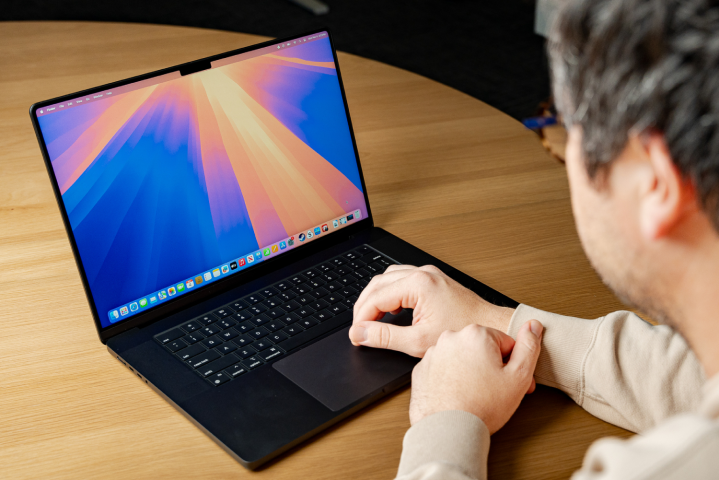The new iPhone 16e is here, and it’s the biggest revamp in the history of Apple’s affordable iPhone line. With Face ID security, an A18 chip and USB-C connectivity, it’s an overhaul that touches almost every part of the device.
Perhaps the most momentous change, though, is the introduction of a large, 6.1-inch OLED display. This is the first time the now-renamed iPhone SE has had an all-screen front face, and it’s also the first time it’s been infused with OLED technology.
Yet the inclusion of OLED highlights something significant: the lack of OLED in any of Apple’s best MacBooks.
That’s downright frustrating. To me, it feels like it really says something that Apple’s cheapest, most budget iPhone is getting an OLED screen before a single MacBook has one. You can pay $599 for an iPhone 16e and get an OLED panel, but you can pay $1,599 for a MacBook Pro and go without. That just doesn’t feel right.
Granted, you’re getting a much smaller OLED screen in the iPhone 16e, but that’s beside the point. The point is that by bringing OLED to its most affordable phone but not to its otherwise class-leading laptops, Apple has inadvertently highlighted a key area where MacBooks are falling behind the competition. And with the new MacBook Air (just weeks away at this point) expected to forgo an OLED screen, the gap is only going to widen.
A long wait ahead

What’s the current situation? At the moment, the MacBook Pro uses mini-LED technology in its screens. Sure, it’s not OLED, but absolutely fantastic regardless. When we reviewed the M4 Pro MacBook Pro, we commended its display, saying “It’s incredibly bright, and the nano-texture display is the perfect balance of delivering clarity while deflecting glare.”
Yet we also noted that “the mini-LED panel will just never reach the highs of OLED, especially in terms of color saturation, accuracy, and contrast.” Mini-LED has been carrying Apple hard while it works on OLED MacBooks, but how much longer will that be the case? Now, as Apple’s rivals bring ever-improved OLED panels to their laptops, it’s becoming increasingly apparent that MacBooks’ missing OLED screens are the elephant in the room.
The good news is that we know Apple is working on an OLED MacBook Pro and an OLED MacBook Air, so Apple fans won’t be without OLED Macs for ever. The bad news is that they won’t be arriving any time soon, with the MacBook Pro expected in 2027 and the MacBook Air not likely to make an appearance until 2029. That means no OLED display in this year’s M4 MacBook Air.

What’s the hold up? Well, Apple tries to perfect technology before it releases it, rather than just pushing something out the door as fast as possible and before it’s ready. Often, that works well — witness the OLED iPad Pro and its tandem OLED display that is miles better than the competition, even though OLED tablets had existed for years.
But sometimes that philosophy comes back to bite Apple. It’s all very well aiming for the “world’s best” headlines rather than those screaming “world’s first,” but it’s hard to be best when your rivals have had a years-long head start on you.
Ultimately, we’re going to have to be patient, and luckily for us the MacBook Pro’s mini-LED display is already awesome. But with a MacBook Air launching imminently without an OLED screen — and an affordable iPhone 16e launching with one — the pressure is mounting on Apple. The wait for OLED MacBooks is going to feel almost unbearable.




